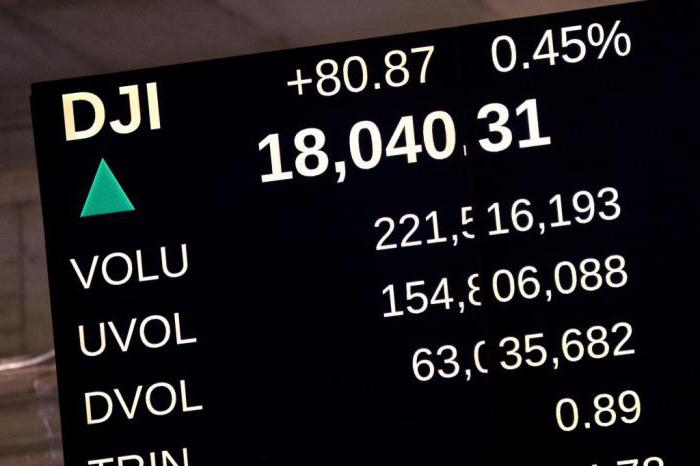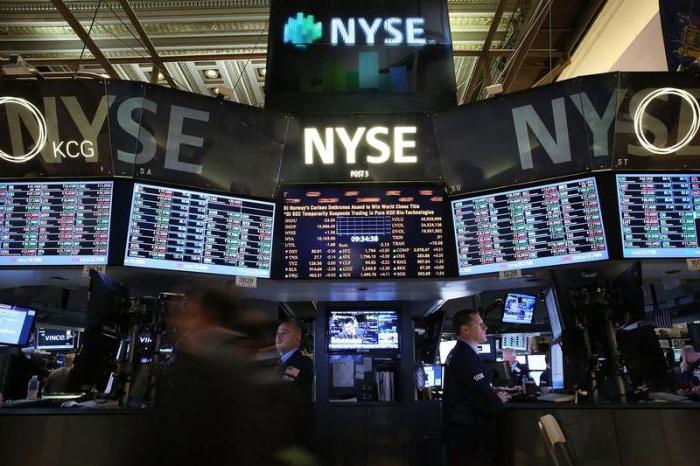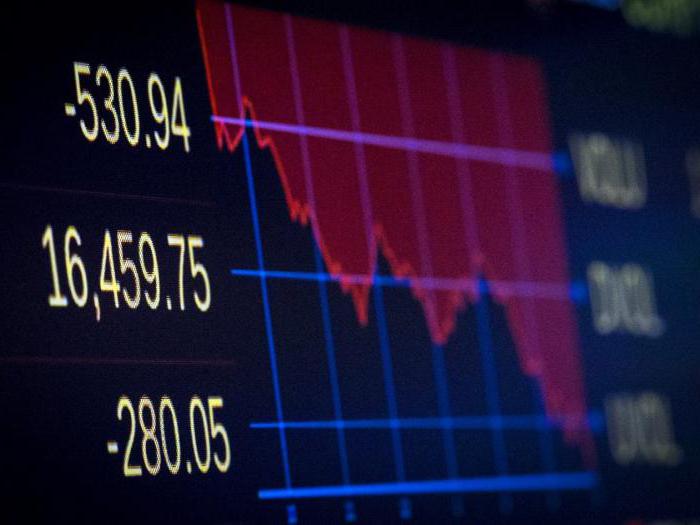The question is what the Dow Jones index is, what does it mean, each of us has been asked at least once, watching the news. More and more often from the TV screen we hear about a fall in the index or an increase in its course. And against the backdrop of the economic crisis, I want to understand financial terms in more detail in order to always be informed.
Charles Dow and Edward Jones
It was by the names of these two people that they invented Dow Jones Index. Charles Dow grew up in a very poor family, from the age of 6 being on the verge of survival, without attending school! By adulthood, he was able to ensure that he worked as a correspondent for a well-known newspaper. Having felt an interest in business and realizing that he can achieve more, he moves to New York, where he meets his future partners Edward Jones and Charles Bergstresser.
A year later they founded the newspaper known today all over the world - the Wall Street Journal. For the first time in this newspaper, they began to publish stock exchanges. The financial condition of America's companies has become transparent. Thanks to this, the business began to develop more actively.
How did the Dow Jones index appear?
In 1884, partners decided to derive an activity index to make analysis easier. It was supposed to reflect business activity in the financial market of New York. To do this, they selected the twelve largest companies, added up the value of their shares and divided by 12, thereby calculating the arithmetic average cost of the securities of these companies. The increase in value indicated the growth of the company and, accordingly, the economy; the fall of the Dow Jones index showed a decrease in capital and a recession in the economy.
Since 1896, the Dow Jones index began to be published in world publishers. So Dow Jones Industrial Average became the first index used on the exchange.
How to calculate the index?
To understand what the Dow Jones index means and really understand the numbers that reflect the index, you need to understand how it is calculated.
In order to be able to take into account all historical data that could affect the level of the index, a special divider was invented (before that, the sum of the value of shares of companies was divided by their number). The value of this divider is constantly changing.
For example, if we take that the sum of the value of all shares of 30 companies is 2641.03, and the divisor is 0.1557159051116, then it is easy to calculate the index value by dividing 2641.03 by 0.1557159051116 = 16960.57. In fact, the Dow Jones index is not so complicated.
If the value of the shares of at least one company changes, the index will also change. Changing it in a positive direction indicates an increase in stock prices. But this is conditional, since the increase in the value of shares of large companies is more tangible and may overshadow a slight decrease among small ones. And if you are the owner of any shares of the company included in the Dow Jones index, increasing its level does not mean profit for you.
If, for example, the index value fell by 100 points, then this means that the share price of 30 companies fell by about $ 100.

Which firms are included in the index, world indices
In 1896, the index was calculated from the sum of the stock prices of the dozen of the largest companies in the United States. Later, the number of companies was expanded to 16, and today there are thirty. Companies that lost their ratings on the global stock market were superseded by larger modern companies. Until today, only one company, originally listed in it, has survived in the index - General Electric. Also included in the index are Microsoft, Coca-Cola, McDonald's, American Express, Boeing, Johnson and Johnson, Nike, Procter & Gamble, Visa, Walt Disney " other.
The NASDAQ index is also often heard, it reflects transactions on the sale of securities that are conducted on the market outside the exchange.
Each country has its own indices, which include the largest companies. Calculations are made almost the same as in 1884, the average cost of capital is calculated, but already according to a more complex scheme.
NIKKEI - Tokyo index, DAX - Germany index, MICEX index in Russia.
It should be noted that transport logistics companies are not included in the Dow Jones index, as are water and energy companies.

The relationship of the index with the economy
Complicating the formula for calculating the current Dow Jones index, financiers have brought the index closer to the United States economy. This means that the state of the index really reflects the state of affairs of America at the economic level.
The companies included in the index have networks around the world, so we can say that the Dow Jones index also reflects the state of the global economy. If there is an increase in the index, then it is possible to predict an increase in the profits of the companies included in it, because based on its indicators, investors make decisions about injecting money into these companies.

Advantages and disadvantages of the index
Of course, the main advantage of the Dow Jones index is well-deserved authority. It is the oldest index in the world, and it has successfully passed the test of time. The more people will focus on him, the more reliable his performance will become. And stability is the key to success and income.
The main drawback of the Dow Jones index is that it has only 30 companies. In the 19th century, this was more than enough, and today these companies cannot reflect the entire economy of America, because there are about ten thousand companies that can affect the financial market and the state of stock exchanges. In this regard, more and more analysts prefer to focus on indices, which include a larger number of companies, for example, the S&P 500 (the number of companies is reflected in the name). Or consider index indicators comprehensively.
The index also does not take into account the size of companies; often an increase in the price of shares of a large company hides a decrease in prices of smaller ones.
The rise and fall of the Dow Jones
The consequences of global economic crises are sharply reflected in the index. Having built a graph of the index over time, we can clearly note the downturns in the economy and view its growth rates. The capitalization of America was in full swing, especially in the index in the 80s and 90s.
The first published indicator was 40.94, and if you look at stock exchanges today, you can see that its level exceeded the mark of 17,500.
The massive drop in the index was due to the global financial crisis in 2008. In 2007, the index level was 14,000, and a year later - 7000. By 2010, it had grown to previous levels and continued to grow further.
The biggest loss in one day was remembered by financiers and analysts around the world as “Black Monday”. The collapse of the Dow Jones index in the world market on that day amounted to 22.6%.
Not only economic factors affect the level of the index, for example, after the explosion of the twin towers in 2001, the index fell 7.1%.

Consequences of a Falling Index
What threatens the collapse of the Dow Jones index, every investor knows, not even interested in stock summaries and not related to America and its stock market. All investment assets are indirectly dependent on the level of the Dow Jones index. This is primarily due to its influence on the exchange rate of the American currency. And the dollar exchange rate affects everything!
In Russia, prices for raw materials will begin to fall, which will negatively affect the exchange rate of the country's main currency. Next comes a chain reaction: inflation rises, the number of investments decreases, the price of loans rises, the stagnation period is delayed.
And if you heard that the market has grown or fallen, then know that we are talking about the Dow Jones index.

Collapse at the beginning of 2016
In early January 2016, the financial world shuddered. Over the course of four days, the Dow Jones Index has lost more than in the past 119 years. And on the first day of trading on January 4, the fall was comparable with 1932 and 2001.
The largest drop in one day (6.9%) was in 1932 during the Great Depression in America. In 2001, the index fell by 2.8%, it seems a little, but actually tangible for investors.
The first four days of 2016 kept investors in a state of panic. And all this happened due to reports on the state of the American economy. Throughout 2015, the United States experienced a decline in industrial production.
An indirect cause of the fall was the state of uncertainty on the stock exchange in China. The Chinese stock exchange index fluctuated quite significantly, then falling by 11%, then increasing by 2%. After the shares fell by 7%, trading was stopped, the exchange was closed.
The devaluation of the Chinese monetary currency and the transition to a new form of economy can lead the whole world to another economic crisis.








